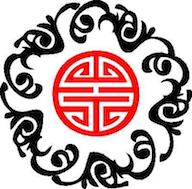Gua Sha is an East Asian healing technique. Gua means to ‘scrape or rub.’ Sha is a ‘reddish, elevated, millet-like skin rash’ (aka petechiae). Sha is the term used to describe Blood stasis in the subcutaneous tissue before and after it is raised as petechiae. Gua Sha is one technique that intentionally raises Sha rash or petechiae. Gua Sha can be used whenever a patient has pain, whether associated with an acute or chronic disorder. There may be aching, tenderness and/or a knotty feeling in the muscles. Palpation reveals Sha when normal finger pressure on a patient’s skin causes blanching that is slow to fade. In addition to resolving musculo skeletal pain, Gua Sha is used in alleviating symptoms of the common cold and flu, as well as any chronic disorder involving pain, which is considered in Oriental medicine to be the congestion of Qi and Blood.
Sha is raised primarily at the Yang surface of the body: the back, neck, shoulders, buttocks, and limbs. The area to be Gua Sha-ed is lubricated with oil. The skin is then rubbed with a round-edged instrument in downward strokes. One area is stroked until the petechiae that surface are completely raised. If there is no Blood stasis the petechiae will not form and the skin will only turn pink.
A ceramic Chinese soup spoon is what our practitioner uses for the instrument. The color of the Sha is both diagnostic and prognostic. Very light colored Sha can indicate deficiency of Blood. If the Sha is fresh red, it indicates recent penetration. If the Sha is purple or black, the Blood stasis is long-standing. If brown, the Blood may be dry. Dark red Sha can indicate heat. The Sha should fade in 2-4 days. If it is slower to fade, indicating poor Blood circulation, the practitioner must ascertain whether it is deficiency of Blood, Qi or Yang, a deeper stagnation, or organ deficiency at the root. In most cases the patient feels an immediate shift in their condition, particularly in their pain or sense of constraint. Gua Sha moves stuck Qi and Blood, releases the exterior by mimicking sweating, and moves fluids. Gua Sha promotes circulation and is a valuable treatment for both external and internal pain.
